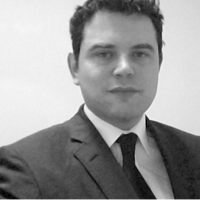Why a gay, Indian-heritage prime minister doesn't signal a 'new' Ireland
| Paris
Rarely does the appointment of a new Irish prime minister make global headlines. But Leo Varadkar, who won his party’s leadership campaign last week, has been hailed by the world’s press as symbolizing a changed Ireland.
Openly gay and the son of an Indian immigrant doctor, the 39-year-old Mr. Varadkar will be Ireland’s youngest ever prime minister, or "taoiseach," when he assumes the office in the coming days. That he could so easily seize the crown of the center-right and traditionalist Fine Gael party has been taken as a sign that the values that governed Ireland no longer hold the sway they once did.
In truth, they haven’t for decades.
Despite the historical firsts that Varadkar's appointment will bring, Ireland is no longer either a rural idyll that exported little more than cattle on-the-hoof, nor an inward-looking, quasi-self-sufficient republic.
Ireland today has closely resembled every other state in Western Europe for quite some time, driven in large part by the economic and demographic changes brought about by the "Celtic Tiger" boom of the 1990s and 2000s. And though the Roman Catholic Church defined Irish morality for many centuries, its hold has largely been broken by abuse scandals and associated cover-ups going back decades. As a result, while Varadkar's rise seems out of the blue, it is part and parcel of what Ireland is today, stereotypes to the contrary.
A more cosmopolitan nation
Ireland was late to decriminalize homosexuality in 1993, but the pace of change has been breathtaking, with civil partnerships introduced in 2010, followed by the legalization of same sex marriage in a 2015 referendum. It was during the referendum campaign that Varadkar "came out," throwing his support behind the "Yes" side.
Earlier that year, the country also passed a law recognizing gender by self-description alone – the first country in Europe to do so.
These social developments followed two decades of rapid economic change driven by foreign-direct investment, primarily in information technology and pharmaceutical manufacturing, and, in a move that later caused the country’s precipitous fall from grace following the 2008 global economic crisis, the domestic construction industry.
Ireland, long an emigrant nation, also became a destination for inward migration, primarily from eastern and central Europe, but also from Africa, China, and Brazil. Despite the occasional street incident and accusations of silent and invisible discrimination common to most European countries, no anti-immigration political party has ever succeeded at the polls, and no mainstream party favors anti-immigrant policies.
Outward migration again became an issue in the years after 2008, with more than 200,000 of the 4.2 million population leaving in search of work. By 2014 an estimated 10 percent of young people had left, with rural areas particularly hard hit.
For his part, Varadkar has dismissed attempts to view him through the prism of identity politics.
“It’s not something that defines me. I’m not a half-Indian politician or a doctor politician or a gay politician, for that matter. It’s just part of who I am, it doesn’t define me, it is part of my character I suppose,” he told Irish state broadcaster RTÉ.
Most Irish seem to agree: unlike in Britain, Irish politicians’ personal lives are rarely the subject of even tabloid newspaper stories, and Varadkar’s rise has been no different. Varadkar’s sexuality was only an issue to the extent that it was discussed as putting a positive spin on the country in the eyes of the world.
In fact, the Irish left, emboldened since the economic crisis, has been sharply critical of Varadkar, whom it sees as simply the next in a line of made-to-order right-wing prime ministers.
Catholic Church's curbed influence
The transformation of Ireland is nothing new, but it is also not yet over. Like Spain, for example, painful reminders of the past continue to inform the present.
The republic had been rocked since the 1990s by a series of scandals involving the Catholic Church, which was long intertwined with the state in the provision of social services. At precisely the time the country started to become wealthy, the church’s moral authority was sapped by allegations, later proved true, of widespread sexual and physical abuse of minors in church-run care homes. Demands that church and state should be formally separated were bolstered by later revelations of mistreatment of rural and working class single mothers, institutionalized in the so-called "Magdalene laundries."
Although its influence, both morally and practically, has waned, the church still controls the majority of Irish schools and has a presence in healthcare, but a movement is growing to change this. In May it was announced that the Sisters of Charity Catholic order of nuns was withdrawing from its role in a planned new maternity hospital.
Education may be trickier. Although secular as well as Protestant and Gaelic-language schools exist, the majority of state schools continue to be run, at least formally, by the Catholic Church – and the state has shown little interest in buying them out. Catholic Archbishop of Dublin Diarmuid Martin has been among the voices arguing for wider patronage of schools, complaining in 2012 that the state was hampering the church’s efforts to divest control.
Other battles are ongoing, too. One of the toughest Varadkar will face is that of abortion, which has been the third rail of Irish politics for more than three decades.
A vocal movement has grown, calling for the scrapping of Ireland’s constitutional ban on abortion and Varadkar, in true Irish political fashion, has made noises indicating support for both sides. A compromise proposal allowing for abortion in the case of fatal fetal abnormality is likely, but it remains to be seen if such as measure can gain the support of Ireland’s more traditional voters, many of whom are clustered in Varadkar’s Fine Gael party.






